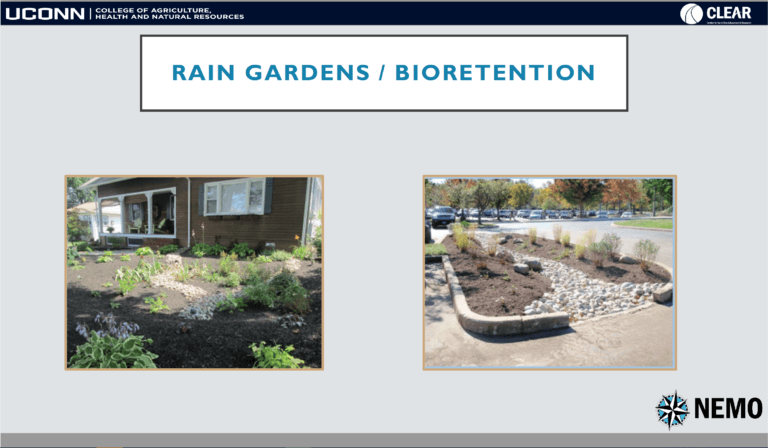The CT Department of Energy and Environmental Protection (DEEP) issued a new General Permit for the Discharge of Stormwater from Small Municipal Separate Storm Sewer Systems (MS4) on September 29, 2023. The permit applies to all NVCOG municipalities with the exception of Bethlehem, and represents a marked increase in municipal responsibility in the management of stormwater and stormwater infrastructure over the original permit issued in 2004.
New Requirements
The new permit retains the original 6 Minimum Control Measures found in the previous permit, but prescribes more comprehensive compliance requirements. NVCOG staff has prepared this MS4 Detailed Comparison between the previous and new permits.
Statewide Assistance
UConn CLEAR
UConn’s Center for Land Use Education and Research (CLEAR) Nonpoint Education for Municipal Officials (NEMO) program has been contracted by DEEP to provide MS4 assistance and outreach to municipalities. They have developed the Connecticut MS4 Guide, an online resource that includes information, guidance, maps and tools to help municipalities work through the permit process. They have also developed a Stormwater Management Plan Template, a comprehensive interactive online map, and have a Municipal Stormwater Educator available to answer questions and provide assistance.
Regional Assistance
Public Outreach and Education
NVCOG has contracted with the Pomperaug River Watershed Coalition (PRWC) to provide public outreach materials through the RiverSmart program. By participating in the program, NVCOG municipalities were able to meet all outreach and education requirements of the previous MS4 General Permit. NVCOG is working with PRWC to expand the program to include the new requirements, and we hope to continue to provide public outreach and education support for the new permit through the RiverSmart program.
MS4 and LID Local Regulation Assessment
NVCOG staff conducted assessments of local regulations in member municipalities in the context of the required legal authorities and regulatory changes required under the new permit. Changes to local regulations will likely be necessary specifically regarding three sections of the new MS4 permit: Illicit Discharge Detection and Elimination, Construction Site Stormwater Runoff Control, and Post Construction Stormwater Management. Detailed assessments have been provided to each NVCOG municipality along with suggestions to meet the permit requirements. Assessment reports and assistance available upon request. Please contact Aaron Budris, abudris@nvcogct.gov.
Mapping Assistance
NVCOG can provide mapping tools and assistance to municipalities for MS4 permit compliance. Please contact NVCOG GIS Coordinator Glenda Prentiss, gprentiss@nvcogct.gov for details.
UConn CLEAR has developed a comprehensive interactive online map to assist with permit compliance.
Environmental Sustainability Forum
On April 20, 2022, NVCOG held a hybrid Environmental Sustainability Forum on MS4 compliance for interested stakeholders in our region. Speakers at this event were Mary Looney from UConn CLEAR/NEMO; Christopher Stone and Karen Allen from CT DEEP’s Stormwater Section; and Dawn Henning from the City of New Haven. A recording of the event is available on NVCOG’s YouTube channel here.
PowerPoints are also available: Mary Looney, Christopher Stone and Karen Allen, Dawn Henning.

A slide from the presentation by Mary Looney.
